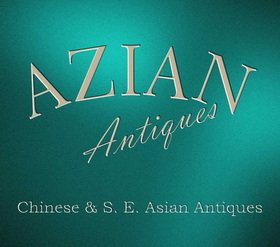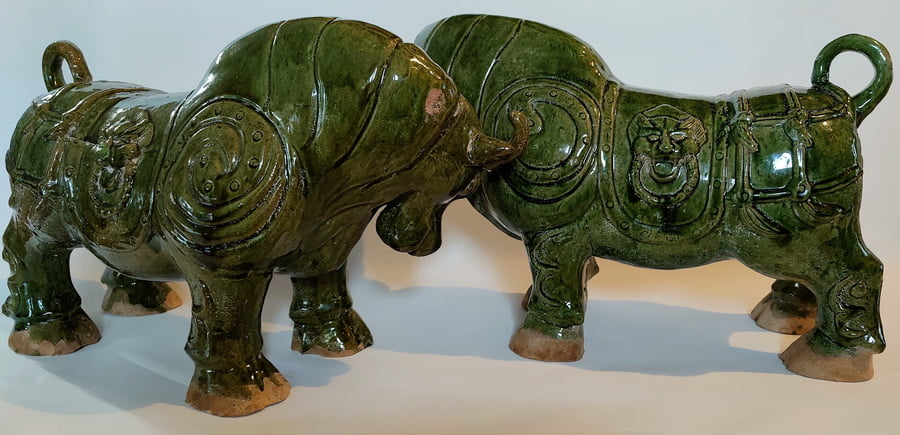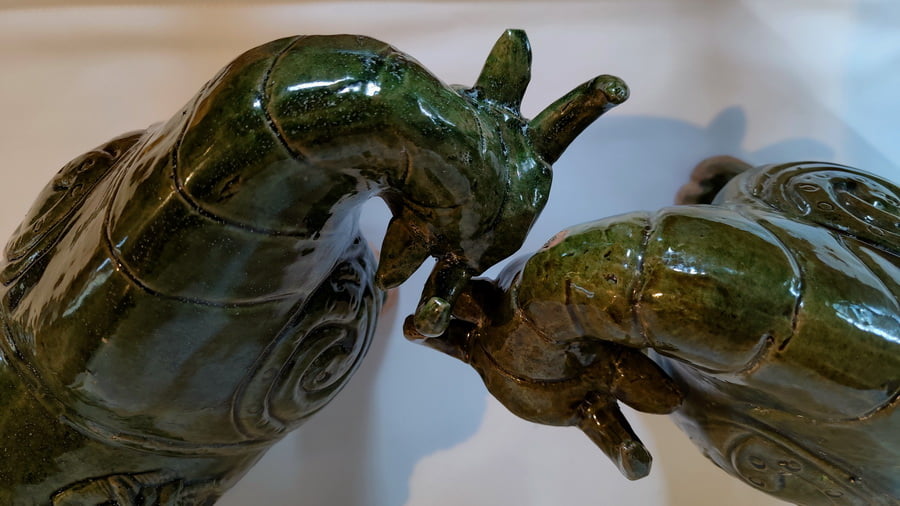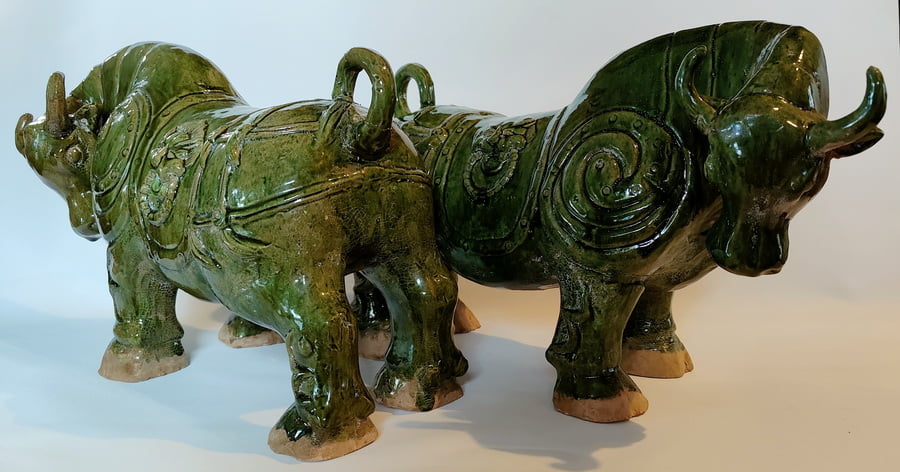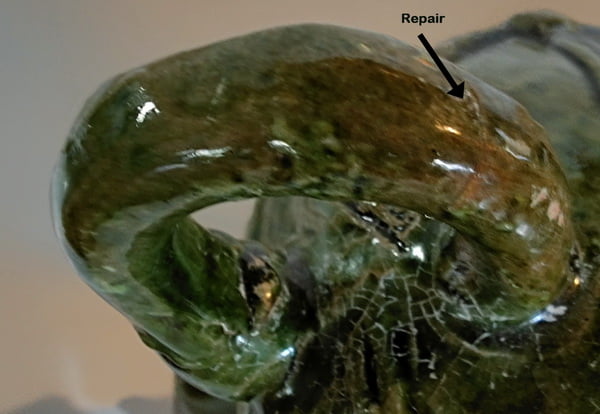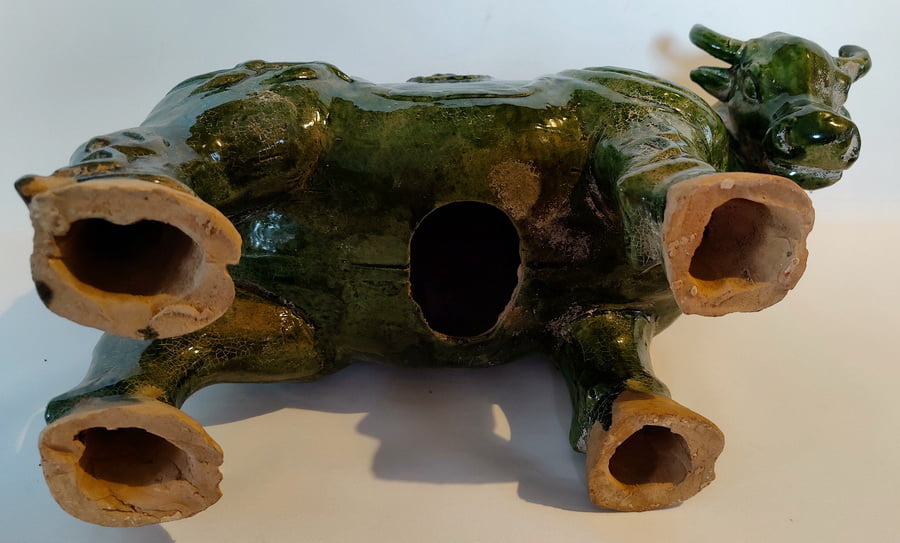An impressive Pair of Qing Dynasty Green Glazed Oxen, a mirror pair. The ox was one of the most important animals to be used in ancient China for agricultural purposes, such as pulling a plow to turn over the earth in preparation for planting crops, and in pulling carts, as well as other tasks. The oxen are the second animal in the 12-year Chinese zodiac cycle, believed by the Chinese to be the symbol of diligence.
Read More
In
ancient times the oxen in China were held in high esteem, they are represented in ancient bronze vessels and sculptures in the round such as these and placed in tombs. They were also used in sacrificial rituals during the neolithic period in China.
During the Han Dynasty, there was a lack of horses due to economic decline as well as frequent wars. During this period high officials used ox-driven carts instead of horses for transportation. Historical writings relate that during the Yuan Dynasty a severe penalty was imposed on those caught butchering oxen without permission.
The traditional Chinese lunar calendar divides a year into 24 solar terms, with Lichun being the first term. It refers to the day when the sun is at the celestial longitude of 315 degrees and heralds the beginning of spring.
During the Western Zhou Dynasty, there was a highly respected politician known as the Duke of Zhou, he specified Lichun as the day to start the annual farming. On that day local officials whipped the spring oxen to declare the start of plowing for the year ahead. The Oxen is one of the 12 animals in the Chinese Zodiac.
This custom spread to many other parts of China and is now celebrated each year with a seven-day long holiday, where lanterns, fireworks banquets, and parades mark the beginning of the Chinese New Year, but instead of oxen, the dragon seems to dominate the festivities.
